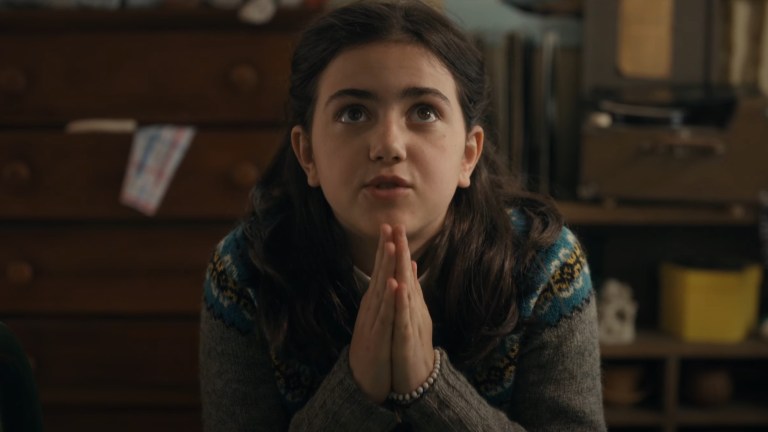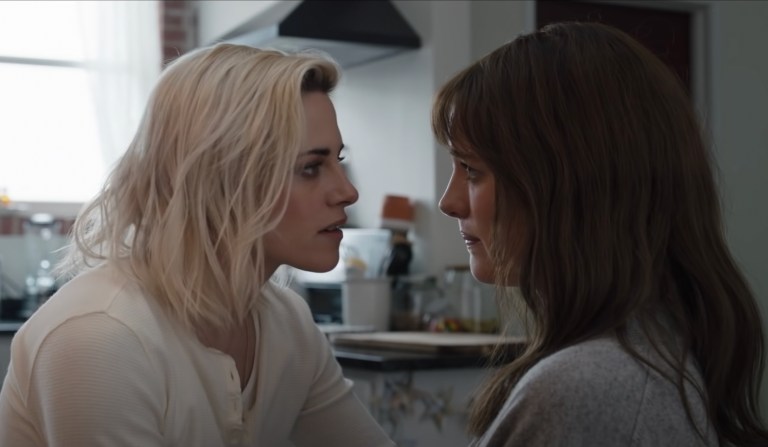The 5 Most Beautiful Babes In The History Of Hollywood
One of the best things about being a film buff is getting to see all the classical Hollywood babes in their prime.
By ![]() Jesse Lobbs
Jesse Lobbs
I won’t deny it. One of the best things about being a film buff is getting to see all the classical Hollywood babes in their prime. Say what you will about me fawning over and drooling at these incredible women. It’s not only because they’re beautiful or hot as hell. They’ve got it going on in all the best ways. If you want to read more about them or their work, you can visit AFI.com or, of course, watch their films.
1. Katharine Hepburn (1907-2003)


My personal favorite. My wife jokes that she doesn’t really have to worry about me leaving her for someone alive. It’s the dead ones I have the hots for. Katharine Hepburn is the greatest American actress as far as I’m concerned and I’m willing to argue about it. If you disagree, I’d love for you to tweet me and we’ll argue about it.
She could appear in any genre and be equally as breathtaking and excellent. She still holds the record for Academy Awards for any Actor or Actress—an amazing four. One of them came from only her third picture, Morning Glory (1933). In one scene, Hepburn’s character is drunk but is still willing to show the crowd, theatre folk, that she has the ability to be the greatest actress the world has ever seen. Like this poignant moment in film history, Hepburn’s films resonate strongly with her own character and life.
Labeled box office poison, she had to manufacture her own comeback with The Philadelphia Story (1940) and did so with remarkable success. This shows that she was not only a brilliant actress, but cleverly independent. She did what she wanted when she wanted and refused to be corralled by any part of the Hollywood system. She was outspoken, wore pants when women were not supposed to wear them, and carried on a two decade long affair with co-star Spencer Tracy until his death.
Must-see: Morning Glory (1933); Bringing Up Baby (1938); The Philadelphia Story (1940); Woman of the Year (1942); The African Queen (1951); Long Day’s Journey Into Night (1962); Guess Who’s Coming to Dinner (1967); The Lion in Winter (1968); On Golden Pond (1981).
2. Bette Davis (1908-1989)


When it comes to style, Bette Davis may have the greatest intensity of any other American actress. Her characters were usually a force to be reckoned with. Starting out with a fizzle, she moved to Warner Bros. and became a star. According to all accounts, she was combative in life as well as cinema. Blunt and forward, usually seen with a cigarette, Davis was the Hollywood starlet until the late ‘40s.
Although she only won the Academy Award for Best Actress twice, her performances garnered her 10 nominations—the first woman to do so. She knew she was combative but admitted that she “never fought for anything but the good of the film.” Roger Ebert, the great late film critic, said that she “was an icon with a grand style, so even her excesses are realistic.” It’s hard to determine whether he was referring to her character in All About Eve (1950) or Bette Davis herself.
Must-see: Dangerous (1935); Jezebel (1938); Dark Victory (1939); The Little Foxes (1941); Now, Voyager (1942); All About Eve (1950); What Ever Happened to Baby Jane? (1962).
3. Audrey Hepburn (1929-1993)


This one I’m bitter about. It’s not because I don’t think she’s excellent. My family and I have two entirely different conceptions of beauty. Some cousins and I once got into a drunken argument about which Hepburn was prettier (knowing full well they’re not related). I was ready to defend Katharine’s honor.
I’m only kidding about being bitter. Audrey is a fun actress and beautiful icon. Hailing from Britain, she made a great impression in American cinema. Incidentally, she is also on the International Best Dressed List Hall of Fame. She had style in every sense of the word.
Her present day iconography stems largely from that style. In one poll, she was proclaimed the “most beautiful woman of all time.” Her fashion sense, a style gifted to her by Hubert de Givenchy, gave her a presence that still defines popular fashion.
When she played in Roman Holiday (1953), she became the first actress to win an Academy Award, a Golden Globe, and a BAFTA Award for one performance. A beautiful actress, it is also easy to note that she was a beautiful human being. As she grew older, she stopped appearing in films and devoted more time to humanitarian efforts. A month before she passed away, Audrey was awarded the Presidential Medal of Freedom in recognition of her efforts.
Must-see: Roman Holiday (1953); Sabrina (1954); Funny Face (1957); Breakfast at Tiffany’s (1961); The Children’s Hour (1961); Charade (1963); Wait Until Dark (1967).
4. Ingrid Bergman (1915-1982)


I am of the opinion that Ingrid Bergman is most beautiful when the camera captures her coming out of the shadows into the light. Convinced. There’s something to her characters, her own persona, that is best exhibited when she is contrasted as light against darkness and darkness against light.
The Swedes have produced incredible stars. Our last two babes both starred in Swedish cinema first and then immigrated to Hollywood. She was unique, needing little coaching and appearing entirely natural. The grace she brings to the screen seems so real that it is almost surreal at times because one can’t imagine this being a real person. It has to be a Swedish characteristic because there is a similar quality in Garbo. Film historian David Thomson noted that “there was a time in the early and mid-1940s when Bergman commanded a kind of love in America that has been hardly ever matched.”
Her versatility is astounding. It was this, and her individuality, that won her three Academy Awards and great critical acclaim.
Must-see: Intermezzo:A Love Story (1939); Casablanca (1942); Gaslight (1944); Notorious (1946): Anastasia (1956): Murder on the Orient Express (1974); Höstsonaten [Autumn Sonata] (1978).
5. Greta Garbo (1905-1990)


If I’m honest, this is the most beautiful film actress there’s ever been. I thinks so. If I didn’t have a thing for Katharine Hepburn, I’d always say it’s Garbo. Another Swede, Garbo never won an Academy Award. In 1954, she was granted an honorary one by the Academy. They noted her “luminous and unforgettable screen performances.” It is a redundant statement because her screen performances are unforgettable precisely because she was luminous.
Her first film immediately caught the attention of Louis B. Mayer, of MGM, who had to bring her to Hollywood (1925). It was a good move for MGM. Garbo’s third film, a silent called Flesh and the Devil (1927), brought her to international fame. She was such a star that the MGM’s greatest marketing ploy was for a film called Anna Christie (1930). They basically sold the film by advertising the catch-phrase “Garbo talks!” Her first words are so remarkable even though they seem forgettable. “Gimme a whisky, giner ale on the side, and don’t be stingy, baby!”
Suddenly, in 1941, Garbo retired. She had only appeared in 28 films over a period of only 16 years. If anything, this brief encounter with this angelic figure only added to her persona and cinematic legacy. She was a private woman to the end, shunning publicity in her retirement and any offer to return to the screen. Privacy seemed to be what she wanted and Hollywood would never giver that. She told biographer Sven Broman that she “did not like her work…[and she] wanted to live another life.”
Must-see: The Sage of Gosta Berling (1924); Torrent (1926); Flesh and the Devil (1926); Anna Christie (1930); Mata Hari (1931); Grand Hotel (1932); Queen Christina (1933); Anna Karenina (1935); Camille (1936); Ninotchka (1939).
*Note: Opinions on which films are “must-see’s” will probably differ somewhat. My advice: watch all of them. I still haven’t. I’m working on it. ![]()





